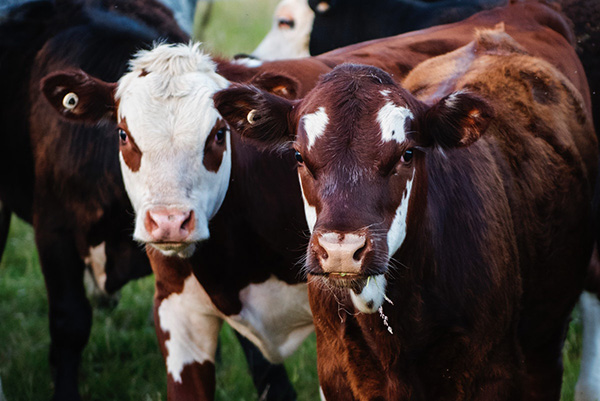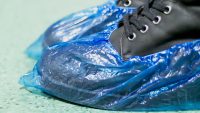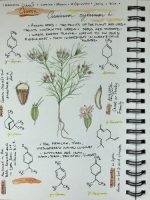Around the world, countries are beginning to take tentative steps toward a return to normalcy following months of stay-at-home mandates and other restrictions in light of COVID-19. Slowly, we’re starting to see employees return to their offices, retail stores open their doors, and restaurants welcome back patrons. However, many will find themselves in a world dramatically different from the one they left before quarantine.
Namely, on top of social distancing and disinfection measures to control further spread of the virus, entire industries are re-examining their legacy processes and systems—especially ones that presented operational challenges at the pandemic’s outbreak—the food manufacturing industry included.
In truth, food manufacturers have gone to great lengths to maintain productivity and output to meet demand throughout the pandemic. But they have done so in the face of unprecedented circumstances, with many plants operating with limited workforces and key employees like quality professionals and plant managers shifted to remote work. Lacking connectivity between those on the plant floor and at home due to long-held manual processes, a growing number of manufacturers must now take a hard look at their quality and safety programs and embrace digital tools.
A Wake-Up Call for Digital Transformation
Most technological investments in food manufacturing over the past several decades have centered on electro-mechanical automation designed to scale up the physical production process. Fewer investments, however, have been made on the equally important data-driven, decision-making process necessary for ensuring optimal performance, food quality and safety.
Even in the most heavily automated plants, it’s not uncommon to find manufacturers managing quality through manually updated spreadsheets, which are often only reviewed after the fact, when it’s too late for remedial correction. There are unfortunately also those who still rely on paper checklists, making it practically impossible to take proactive action on collected process data—much less get the information in front of remote quality professionals and managers. Meanwhile, others have gone as far as adopting software solutions for quality data management and process control, but these tend to be on-premises systems that employees can’t access outside of the four walls of the plant.
We have also seen many examples where, due to workforce restrictions and availability, employees from other parts of the manufacturing business (e.g., R&D, IT, and back-office teams) have been brought in to perform plant-floor activities like quality and food safety checks. The goal has been to prevent impediments to production output, just when demand has increased substantially. But ensuring that these employees perform the checks on time and in the correct way—with little time for training or coaching—has left many plant leaders in a precarious position.
The challenges seen with these capabilities and enabling geographically dispersed teams to work together through the pandemic have been a wake-up call of sorts for digital transformation. Manufacturers are coming to the realization that they’ll need data accessibility, actionability and adaptability along the road to recovery and in the post-COVID-19 world. And with social distancing and other workplace precautions expected to continue for the foreseeable future, the imperative is all the more urgent.
The Solution Lies in the Cloud
To digitally transform quality and safety programs today, food manufacturers should prioritize investment in the cloud. Notably, cloud-based quality management systems offer a way to standardize and centralize critical process information, as well as tools to empower employees at all levels of the enterprise.
For plant-floor operators struggling to keep up on account of reduced workforce sizes, such solutions can automate routine yet important activities for quality assurance, including data collection, process monitoring and reporting. If a team member needs to cover a different shift or unfamiliar task, role-based dashboards can help them to see required actions, while process workflows can provide guidance to ensure proper steps are taken even with a limited workforce. Further, automated alerts can provide timely notifications of any issues—whether it be a missed data collection or an actual food quality or safety concern present in the data.
Perhaps most importantly during the pandemic and for the post-COVID-19 world, the cloud makes critical quality data instantly and easily accessible from anywhere, at any time. Quality professionals, plant managers, and other decision-makers can continue to monitor and analyze real-time process data, as well as observe performance trends to prevent issues from escalating—all safely from home.
The scalability of cloud-based solutions also streamlines deployment so organizations can rapidly implement and standardize on a single system across multiple lines and sites. In doing so, it becomes possible to run cross-plant analyses to identify opportunities for widescale process improvement and align best practices for optimal quality control at all sites. This ability to understand what’s happening in production—through real-time data—to enact agile, real-world change is a hallmark of successful digital transformation.
An Investment for Whatever the Future Holds
Ultimately, investments in secure cloud-based quality management and the broader digital transformation of manufacturing operations are investments in not only perseverance during the pandemic, but also resilience for the future. Food producers and manufacturers who can readily access and make informed decisions from their data will be the ones best equipped to pivot and adjust operations in times of disruption and uncertainty. And while it’s unclear what the future holds for the world, the food industry, and COVID-19, it’s safe to say we likely won’t see a full return to normalcy but the emergence of a new—and in many ways better—normal, born out of digital solutions and smarter ways of thinking about quality data collection and monitoring.





















